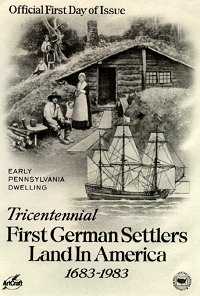|
|
|
 |
|
|
History
of German-American Relations > |
|
Immigration At the beginning of the 18th century, economic problems in Germany brought a new wave of immigrants. Nearly one million German immigrants entered the United States in the 1850s; this included thousands of refugees from the 1848 revolutions in Europe. In these later phases of German immigration, newcomers joined established settlers. This phenomenon of "chain migration" strengthened the already existing German regions in the United States. Today, approximately 58 million Americans claim German ancestry. They are most numerous in California, followed by Pennsylvania, Ohio, Illinois, and Texas. The most dense German-American populations are in the "German belt" -- Wisconsin, Minnesota, North Dakota, South Dakota, Nebraska, and Iowa. Politics
& Government The first and most prominent German figure in American politics was Carl Schurz. He was influential in the election of Abraham Lincoln, served as ambassador to Spain, became a general in the Civil War, later was elected U.S. senator from Missouri, and finally was appointed Secretary of the Interior under President Rutherford Hayes. Foreign
Relations See
also: |
|||
|
|||
| Texts
are abridged from U.S. State Department IIP
publications and other U.S. government materials. |
|||
| What
kind of information materials are available?
CD: These documents are available in fulltext format on the About the USA CD-ROM. Teachers: Request a copy for classroom use. L: Selected documents are available in German as well as other languages, including Arabic, Chinese, French, Spanish, Persian and Turkish. |
DISCLAIMER
Any reference obtained from this server to a specific commercial product, process, or service does not constitute or imply an endorsement by the United States Government of the product, process, or service, or its producer or provider. The views and opinions expressed in any referenced document do not necessarily state or reflect those of the United States Government. |

